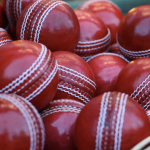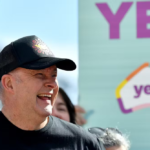Journalists and history
At election time, do not rely on anything you may read in newspapers like The Daily Telegraph and, increasingly, The Australian – you will almost certainly be misled, either through journalistic ignorance or by clever manipulation.
While there are some excellent journalists in Australia, such as Jack Waterford, for example, the level of competence and professionalism in Australia is generally poor. This means that three things are guaranteed at election time. First, the typical journalist will display no more than a tenuous grasp of the English language; second, there will be no historical perspective provided with any analysis of issues; and third, a total ignorance of statistics will be displayed in any discussion of opinion polls. I will save the first matter for another day, but let me expand on the next two critical observations.
Much has been written about the fact that most first term governments in Australia are re-elected. However, few have remarked on the fact that in the last twenty years, each time a party has assumed government after a long stint in opposition, that new government almost loses the first election as the incumbent. It happened to Bob Hawke when he took on Andrew Peacock in 1984 and to John Howard in 1998, against Kim Beazley – noting here that Beazley actually got a majority of the votes (51%), but a minority of the seats. With that perspective in mind, what is happening now should be no surprise. It should also be no surprise if, assuming Labor is re-elected on 21 August, Gillard and whoever succeeds her remain in government for a long time. Again, that is what transpired with Hawke (and Keating) and with Howard.
Now let us turn to statistics and opinion polls. Opinion polling is an exercise in statistics and statistics is a collection of relatively imprecise predictive tools. Even the best opinion poll will contain a significant margin of error – two to three per cent either way is not unusual – and cannot be relied on to be an accurate predictor of what will happen when election day comes along. A three per cent margin of error means that if the same question from a poll is asked one hundred times, on ninety-five of those occasions, the percentage of people giving a particular answer would be within three per cent of the percentage who gave that same answer in this poll. Also, most reliable polls have a confidence interval that means that once in every twenty such polls you will get a rogue result. For a good illustration of this, see this blog by Robert Niles concerning the 1996 US presidential election.
Alas, these simple facts seem to have escaped most journalists – or perhaps it suits them and their employers to feign ignorance, so that a particular point of view can be advanced or bolstered. For those of you who want to see how a professional interprets opinion polls, I recommend Pollytics and The Poll Bludger. Do not rely on anything you may read in newspapers like The Daily Telegraph and, increasingly, The Australian – you will almost certainly be misled, either through journalistic ignorance or by clever manipulation.
_____________________________________________________














les pickett
August 9, 2010 at 7:55 am
Journalists ands History
Patrick – two more points. There was a time when we were able to distinguish between reporting and opinion. Very hard to do these days. Then there is the wonderful capacity to take a quote out of context to compeletely transform the meaning.
Dhutchy
August 23, 2010 at 12:50 pm
Journalists and History
Unfortunately Patrick, real news hounds are an endangered species. Those few that remain are being strangled by their publishers to produce material at adequate bytes per second. Much of the media pack have to create popular press headlines without substantive analysis, hence the current hullabaloo about our extraordinary state of politicaly affairs, even though it could be argued that the media has played a significant role in making and perpetuating the hoohaa. Much of the common political commentary is flippant and for, and of, the moment, the day’s deadline, rather than something backed with accurate historical perspective. Popular news, where quantity, rather than quality, is served around the clock, is here to stay and will slake the appetite of many, yes it will be manipulated by pollsters, propagandists, and even elements of the proletariat, to fit their momentous purposes.
Despite many better alternatives, many people will still prefer popular mainstream news media, with the same gusto as many consume fast food. It will be interesting to observe how superserved newsburgers will impact.
Another great illustration of pollitical polling is in a book by Roland Perry, The Programming of The President, which shows how pollsters worked Ronald Reagan for the greatest effect. It worked fine except for when the subtleties of human error came into play.
Well done for attempting to provide a stronger stream of consciousness.